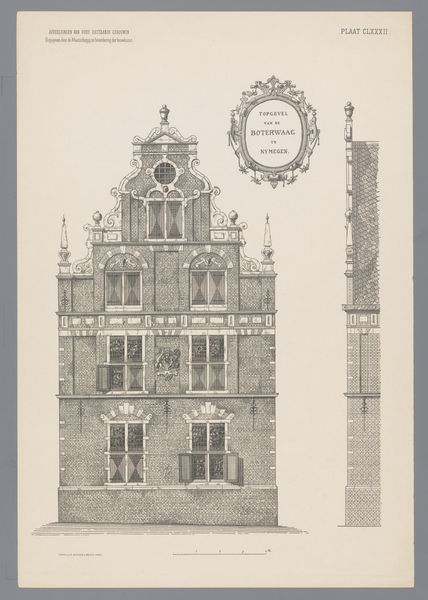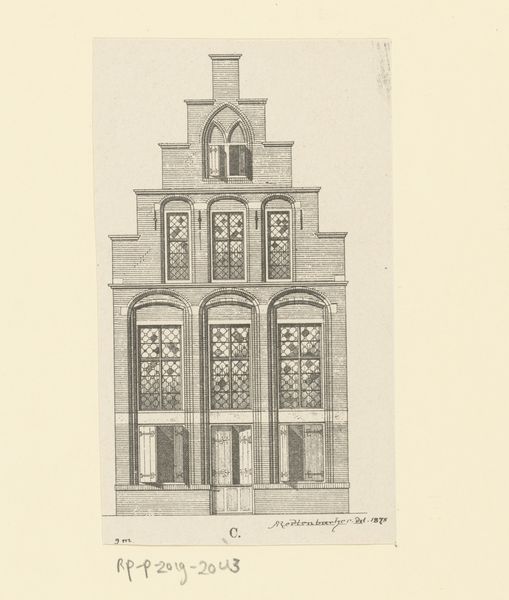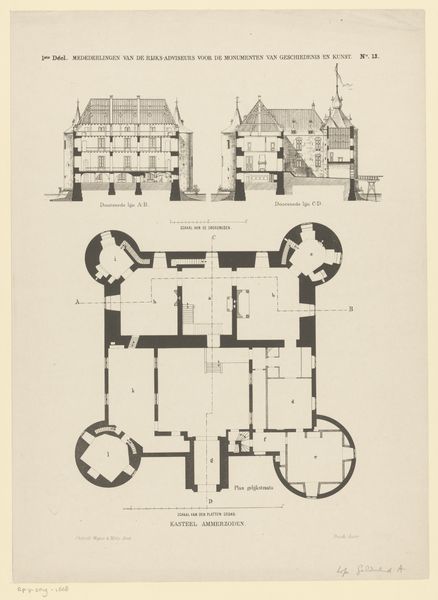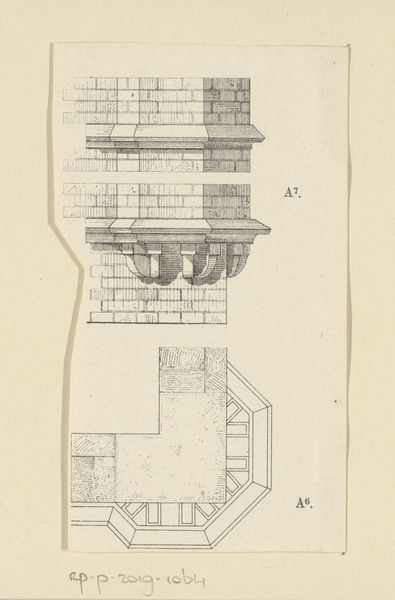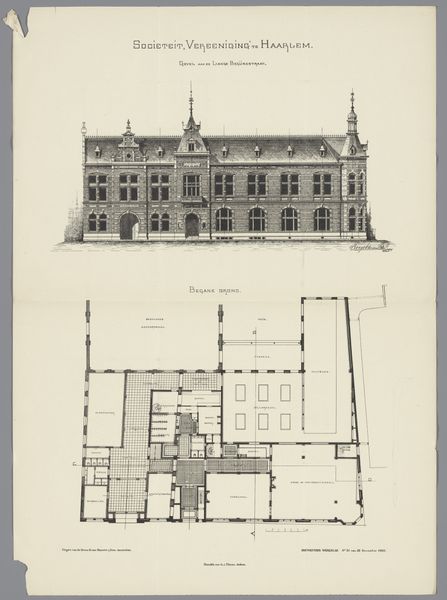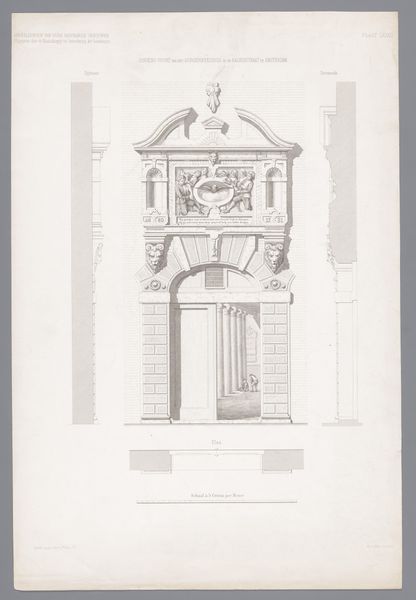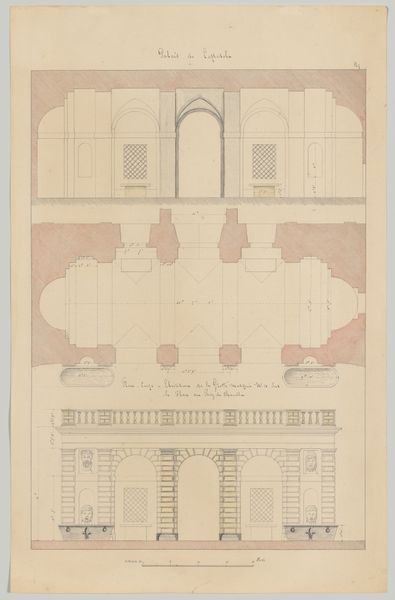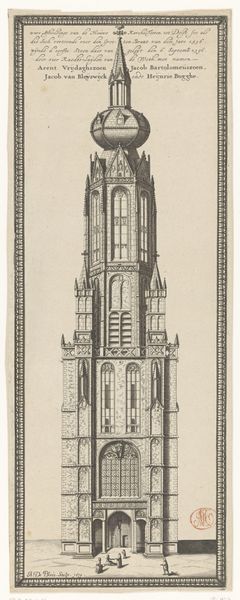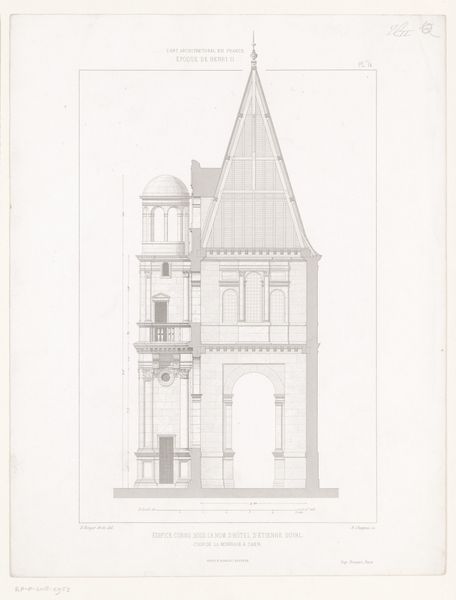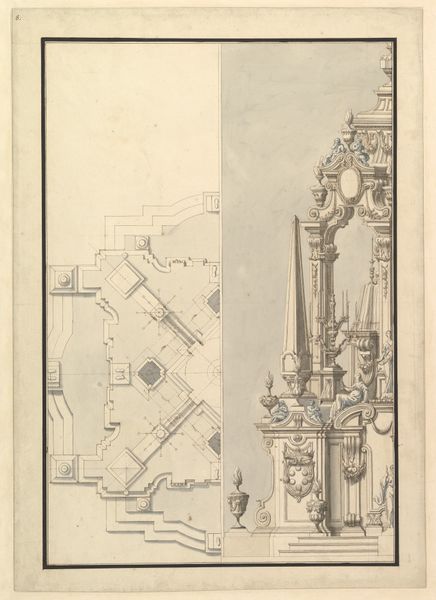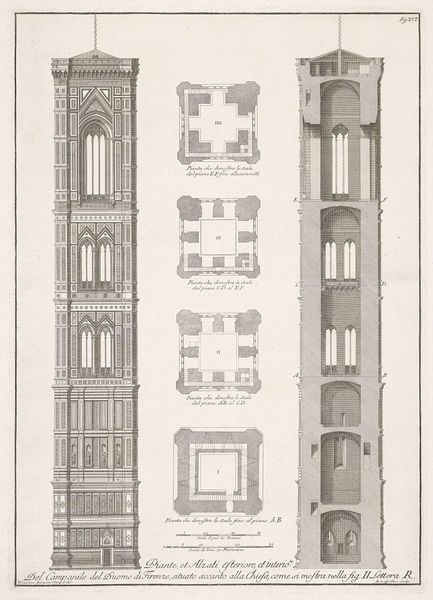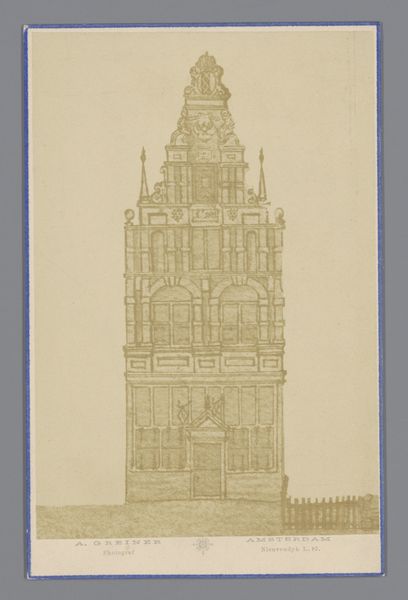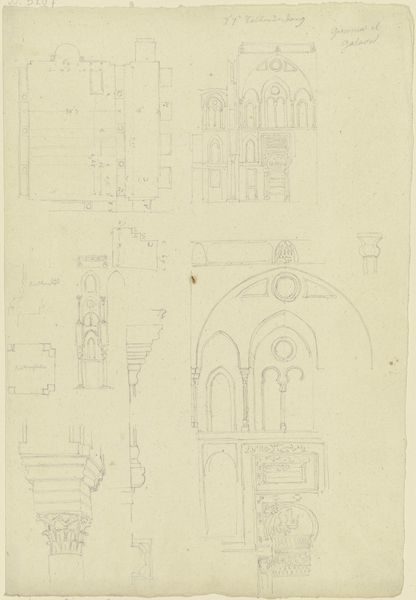
Dimensions: height 298 mm, width 106 mm
Copyright: Rijks Museum: Open Domain
Curator: Let's turn our attention to "Gevel en detail van het huis Hof van Holland in Haarlem," which roughly translates to "Facade and Detail of the House Court of Holland in Haarlem." This etching, printed on paper, dates between 1862 and 1917. Editor: It's so meticulously rendered, almost like an architectural blueprint, but with a distinct artistic flair. There’s something quite formal about the facade. It’s very precise. Curator: Absolutely. These kinds of architectural prints gained popularity as cities grew and evolved, and they became a way of documenting urban spaces but also of promoting civic pride. Prints were relatively cheap to produce, allowing wider access. Editor: That's fascinating, knowing it was intended for a broad audience. When you see these very traditional architectural details, especially elements that evoke earlier periods, do you think they intended to solidify some sort of public message? Was this nostalgia, maybe? Or aspirational in some way? Curator: It speaks volumes about the socio-political landscape. This house, 'Hof van Holland', could have connections with significant social standing. Architectural representations were tied closely to notions of power, legitimacy, and civic identity, and how the owners wanted to project the symbolic capital of the inhabitants. Editor: I see the subtle blending of styles, from the classical symmetry to what almost seems like Gothic ornamentation in the gables. It tells a story not just of building design, but how ideas around taste and authority evolved. Did realism really capture the grittiness of the emerging metropolis, or selectively highlight the parts that aligned with the city’s constructed idea of itself? Curator: Precisely. It also raises questions about who had the means to commission and consume such imagery. What were the implications for those whose lives were excluded from this narrative? Editor: So much more to see here than just lines on paper. This image opens a whole realm for seeing the past, and reflecting how it shaped our present realities. Curator: Indeed, it’s through grappling with the layered contexts embedded within such imagery that we start to unpack our own role in upholding certain structures or striving for change.
Comments
No comments
Be the first to comment and join the conversation on the ultimate creative platform.
